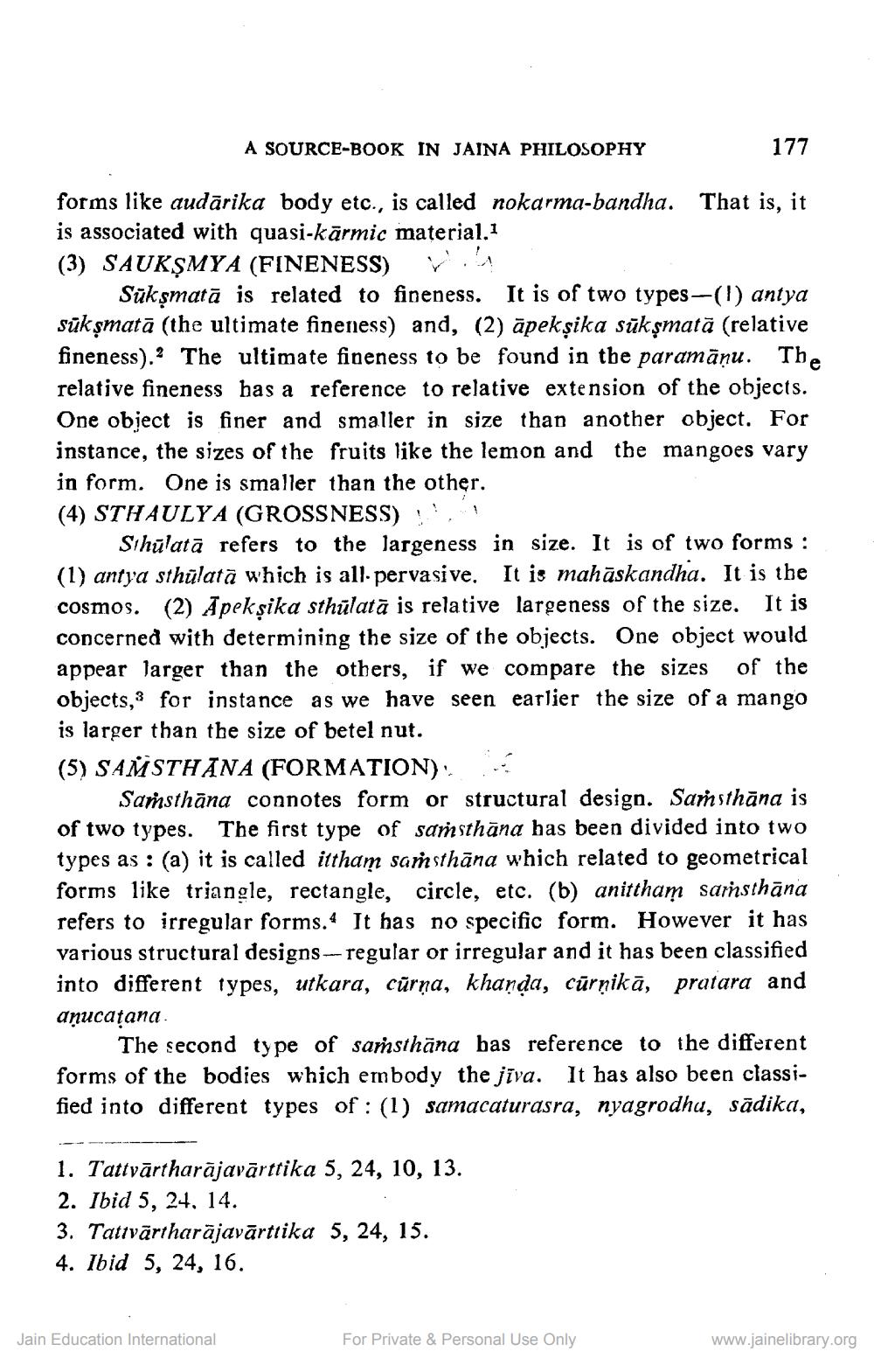________________
A SOURCE-BOOK IN JAINA PHILOSOPHY
177
forms like audārika body etc., is called nokarma-bandha. That is, it is associated with quasi-kārmic material.1 (3) SAUKSMYA (FINENESS) V.
Sūkşmatā is related to fineness. It is of two types-(1) antya sūksmatā (the ultimate fineness) and, (2) āpeksika sükşmatā (relative fineness). The ultimate fineness to be found in the paramāņu. The relative fineness has a reference to relative extension of the objects. One object is finer and smaller in size than another object. For instance, the sizes of the fruits like the lemon and the mangoes vary in form. One is smaller than the other. (4) STHAULYA (GROSSNESS) !!!
Sihūlatā refers to the largeness in size. It is of two forms: (1) antya sthūlatā which is all-pervasive. It is mahāskandha. It is the cosmos. (2) Āpekșika sthūlatā is relative largeness of the size. It is concerned with determining the size of the objects. One object would appear larger than the others, if we compare the sizes of the objects, for instance as we have seen earlier the size of a mango is larger than the size of betel nut. (5) SAMSTHĀNA (FORMATION)
Saṁsthāna connotes form or structural design. Saṁsthāna is of two types. The first type of samsthāna has been divided into two types as : (a) it is called ittham saṁsthāna which related to geometrical forms like triangle, rectangle, circle, etc. (b) anittham sarnsthāna refers to irregular forms. It has no specific form. However it has various structural designs --- regular or irregular and it has been classified into different types, utkara, cūrņa, khanda, cūrņikā, pratara and aņucațana
The second type of saṁsthāna bas reference to the different forms of the bodies which embody the jīva. It has also been classified into different types of : (1) samacaturasra, nyagrodhu, sādika,
1. Tattvārtharājavārttika 5, 24, 10, 13. 2. Ibid 5, 24, 14. 3. Tativārtharājavārtrika 5, 24, 15. 4. Ibid 5, 24, 16.
Jain Education International
For Private & Personal Use Only
www.jainelibrary.org




